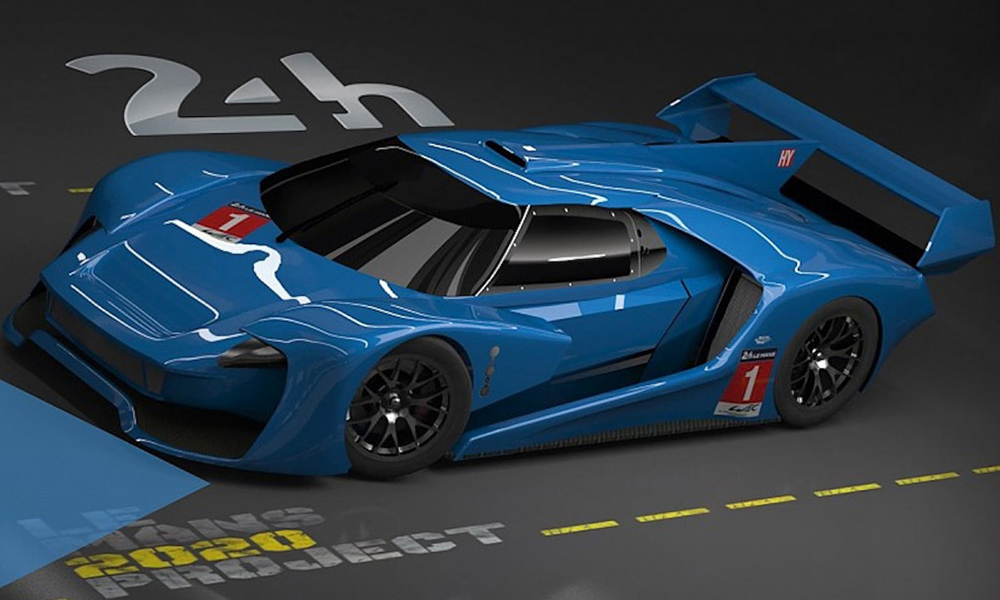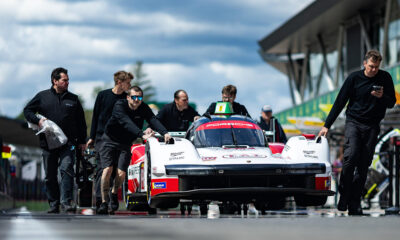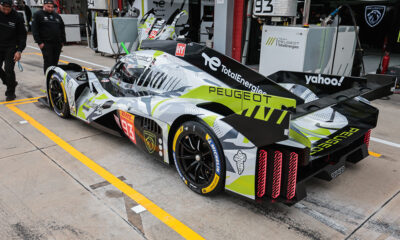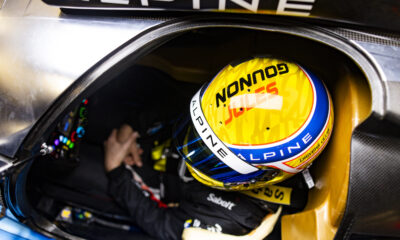
Image: ACO
April 8, 2018 – Sportscar365 reports that a single, low-power hybrid system is being planned for the FIA World Endurance Championship’s LMP1 rules refresh slated for 2020. ACO president Pierre Fillon says the aim is to “limit development of the car” with cost-cutting at the heart of preliminary talks.
May 8 – FIA president Jean Todt suggests that the new formula will not be known as LMP1.
June 7 – The FIA confirms the WEC’s new top-level prototype regulations will be based on a ‘Hypercar’ concept, rather than LMP1. Toyota, Ford, McLaren, Aston Martin and Ferrari are known to be in working group discussions.
June 15 – Details of the Hypercar formula are revealed at the 24 Hours of Le Mans. Key points include a target budget of €25-30 million ($30-35 million) for a two-car program, the use of front-axle 200 kW electric motors, and a requirement for manufacturers to put their hybrid systems up for sale or lease to customers. The target Le Mans race lap time is 3:20. Multiple OEMs express interest.
June 15 – IMSA president Scott Atherton expresses interest in the published regs, but warns that the target budgets are the “biggest hurdle” for North American adoption.
July 25 – Niche American automaker Scuderia Cameron Glickenhaus outlines its Hypercar intentions with a GT-prototype concept dubbed ‘SCG 007 LMP1’.
September 24 – BMW motorsport director Jens Marquardt says “clarity” is needed on the regulations amid tight deadlines. The first race of the new formula is two years away.
On the same day, McLaren’s Zak Brown hints that McLaren will have made an internal decision by the New Year.
October 21 – Brown casts doubt over the British marque’s plans to formulate a program for the start of the 2020-21 season.
December 5 – The FIA publishes technical regulations for 2020-21. Manufacturers must build a minimum of 25 road cars by the end of the first season, fitted with the race car engine and ERS system. A total power output of 950 hp (708 kW) is established, while the 200kW electric motor is retained. Evo kits and movable aero are announced, while success ballast will ensure even competition. The dimensions of the cars are set out, confirming that they will be slightly larger than current LMP1 machinery.
December 5 – IMSA president Scott Atherton says the North American sports car sanctioning body has time on its side in choosing whether take on Hypercar for its top championship.
December 7 – Fillon says that a group of manufacturers requested the production requirements outlined two days prior. This starts a drive for production-based machinery to join production-styled prototypes on the grid.
December 11 – BMW rules itself out of Hypercar, citing its lack of an appropriate production model as a core reason.
December 13 – Existing LMP1 entrant ByKolles Racing announces its intentions to form a top-category program for the 2020-21 season.
December 20 – Ferrari says it’s continuing to monitor the class, with the Italian manufacturer noting that it wants to see a “strong link” to road car development.
February 6, 2019 – An ORECA representative confirms to Sportscar365 that the French chassis builder has conducted feasibility studies into a potential Hypercar program.
February 12 – ByKolles reveals the first render image of its planned hypercar, having already started its recruitment drive for the project.
March 7 – The FIA World Motor Sport Council confirms that production-based hypercars will be added to the mix alongside hypercar-styled prototypes. Target lap times increased due to road-going hypercar allowances.
March 14 – Aston Martin hails the rules update, describing it as a “really positive move”. Toyota also has its say on the change, suggesting that it would be open to building either a pure prototype – its main goal – or a road-based contender for the WEC.
March 18 – It emerges that the decision to allow production-based cars was made by the FIA and ACO at the request of Aston Martin, Ferrari and McLaren. Officials reveal new target lap time of 3:30 at Le Mans.
April 9 – Autosport reports that movable aero devices will no longer be allowed.
April 16 – McLaren continues to push for the class to be open to production-based cars only, and appears committed in trying to figure out a program.
April 17 – A possible replacement for Hypercar, known colloquially as GTE-Plus, emerges. It’s based on the idea of manufacturers entering souped-up versions of their GTE cars with around 200 more horsepower. While considered a breakaway concept lacking traction in official meetings, several manufacturers acknowledge and vouch interest for it in the following weeks.
May 4 – With the class still to be defined, Toyota hits out at the delays in defining the formula, calling the roundabout discussions “ridiculous”. It points to a meeting on May 16 as a potential milestone in the process.
May 15 – LMP2 team principal Xavier Combet warns that it would be a step back for the class if it got slowed down to fit in with the projected Hypercar Le Mans lap times.
May 16 – A key technical working group meeting is held. Few immediate details emerge and an OEM is still yet to formally commit. It’s understood ‘Plan B’ (IMSA DPi) and ‘Plan C’ (GTE-Plus) are explored but no immediate decision taken, with the ACO waiting on a firm commitment from Aston Martin to officially keep its Hypercar plan alive.
May 24 – Sportscar365 reports on a modified version of the Hypercar regs. It introduces the possibility of a reduced hybrid system whilst reverting to the original prototype-based version of the regs.
June 3 – Ford’s sporting boss Mark Rushbrook says the U.S. manufacturer’s decisions on its future racing programs will likely hinge on the outcome of Hypercar discussions.
June 10 – It emerges that hybrid systems are set to become optional for Hypercar. A couple of days later, Toyota says it would be onboard with the change – despite its position in favor of hybrid technology.
June 14 – The ACO uses its annual press conference to confirm some details of the regulations. Cars will be 1100 kg, total power outputs will be 750hp (550 kW) – around 200 hp less than 12 months prior – and both hybrids and non-hybrids will be allowed. An official title has yet to be chosen.
June 14 – Aston Martin and Toyota become the first OEM manufacturers to formally commit to the 2020-21 season. Ford rules itself out, while ORECA voices its strong desire for a program. IMSA president Scott Atherton continues to express optimism at mixed grids with the DPi successor formula.






















